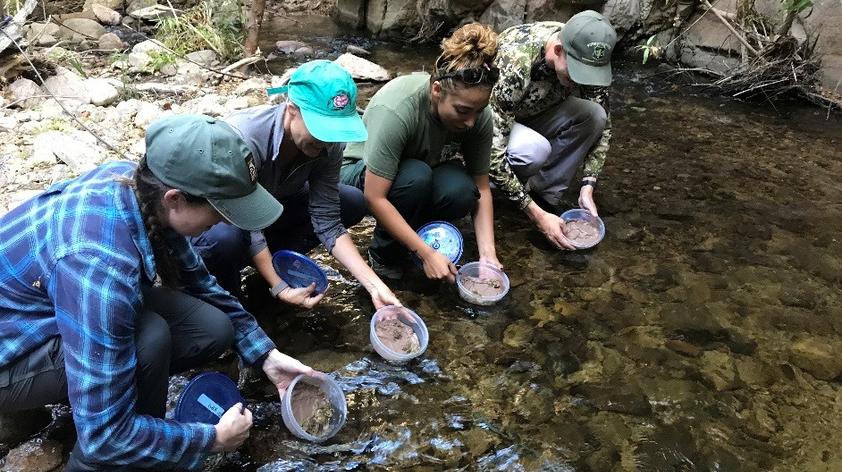
Cousins or siblings? Understanding mountain yellow-legged frog genealogy in managed care
For what purpose is it important to understand how closely related individuals are in a population? In the case of the mountain yellow-legged frog (Rana muscosa) managed care program, it appears crucial for ensuring its long-term sustainability and maintenance of genetic diversity.
The mountain yellow-legged frog is an endemic amphibian species from Southern California, listed as endangered by the state of California and critically endangered by the United States Fish and Wildlife Service. Populations in the wild have dramatically declined for the past two decades due to climate change, disease outbreaks, invasive predators, and habitat destruction.
In 2006, a managed care program started at the San Diego Zoo Institute for Conservation Research (ICR) by bringing tadpoles from two of the three remaining populations in the wild at the San Jacinto (SJ) and San Bernardino (CC) mountains. The goal was to manage the genetic diversity represented in the wild but also to supplement wild populations with additional frogs to maintain populations’ size.
ICR's managed care program has been very successful, reintroducing more than 3,000 mountain yellow-legged frogs at different life stages.
However, the genetic management of frogs in our managed care program has been challenging given the lack of information about relationships among individuals that started the SJ and CC breeding program (aka founders), which might affect in a longer-term levels of inbreeding and reproductive success.
Managers have relied on pedigree data to maintain healthy managed care populations by designing appropriate breeding strategies. But in some cases, pedigrees might be incomplete or data recorded inaccurately.
The advent of genetic, and more recently, genomic tools has permitted to study the genetic makeup of populations exhaustively. In the mountain yellow-legged frog, genomics has allowed determination of the genealogical relationships of the two mountain yellow-legged frog populations managed at ICR by subsampling the genome of this species and identifying genetic variants.
The entire genome of mountain yellow-legged frogs has not yet been practicable to be sequenced, given its size, which is estimated to be approximately three times the size of a human genome. Seventy-eight mountain yellow-legged frog individuals were sequenced using next generation sequencing technologies and genetic diversity and relationships estimated within SJ and CC populations.
Genetic analysis suggested higher levels of genetic diversity in the SJ population than CC, known to have started with a higher number of founders, but CC showed less degree of relatedness between its founders than SJ. The SJ population revealed several pairs of founders as full-siblings (or parent-offspring) relationship equivalent to first order relatives, which recommends careful management of the SJ population to avoid inbreeding.
To the date, breeding recommendations have been provided to managers suggesting the most suitable SJ individuals to be bred. However, a formal management plan will be designed to ensure that genetic results are included as part of the management strategies of mountain yellow-legged frogs in managed care.













